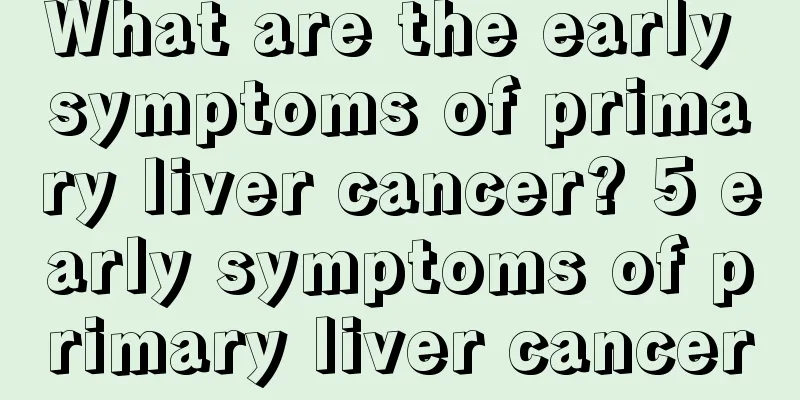What are the early symptoms of primary liver cancer? 5 early symptoms of primary liver cancer

|
Primary liver cancer has an insidious onset and lacks typical symptoms in the early stages. Many patients do not even discover that they have the disease when it is already in the late stages. Therefore, we patients must understand the symptoms of the disease. As long as we find ourselves having similar symptoms, we must go to the hospital for diagnosis and treatment as soon as possible. Primary liver cancer does not have any particularly obvious symptoms in the early stages, and the onset is relatively hidden. Many patients lack typical symptoms in the early stages. Some patients' cancer has already reached the late stage, and because the symptoms are not obvious, many patients are more likely to neglect it. Therefore, we must understand the symptoms of the disease and achieve early detection and early treatment. So what are the early symptoms of primary liver cancer? 1. Liver pain: More than half of the patients have pain in the liver area, and the pain is equal to the location of the tumor. Liver pain is caused by the rapid growth of the tumor and liver capsule. If the lesion invades the diaphragm, the pain may involve the right shoulder. If the cancerous nodule ruptures, it can cause sudden pain, symptoms and signs of peritonitis. If there is heavy bleeding, it can cause syncope and shock. 2. Hepatomegaly: More than 90% of patients have enlarged livers, which are progressively swollen, hard in texture, uneven in appearance, with nodules of varying sizes or huge, blunt and irregular edges, and often with varying degrees of tenderness. The right costal arch or xiphoid process of the liver is protruding, and the abdomen may have local or complete bulges. If the tumor is located on the diaphragmatic surface, the main manifestation of the diaphragm and the lower edge of the liver cannot swell. The arteries of liver cancer are rich and tortuous, or suddenly narrow due to the compression of the huge hepatic artery or abdominal aorta by the tumor, and sometimes a blowing murmur can be heard near the tumor in the abdominal wall. 3. Jaundice: usually in the late stage, can cause liver cell damage, or due to compression or invasion of tumor mass near the portal bile duct, or bile duct obstruction caused by cancer tissue and blood clots 4. Liver cirrhosis: Liver cirrhosis combined with portal hypertension with splenomegaly, ascites, venous collateral circulation, etc. Rapid increase in ascites, usually leaking fluid. Rupture caused by hemorrhagic ascites tumor invasion of liver capsule or abdominal cavity, and even peritoneal metastasis of cancer. 5. Systemic manifestations of malignant tumors: weight loss, fever, loss of appetite, fatigue, malnutrition and cachexia. A small number of patients with liver disease may have systemic manifestations, called paraneoplastic syndrome, with hypoglycemia and polycythemia being the most common, and other rare manifestations include high calcium, hyperlipidemia, cancer, etc. |
Recommend
What to do if a pregnant woman has a teratoma
What should I do if a pregnant woman has a terato...
There are so many types of stomach diseases
Gastric disease is a relatively common disease am...
Explain the symptoms of early lung cancer
There are many early symptoms of lung cancer, but...
What should I pay attention to before and after thigh liposuction
Thigh liposuction is a plastic surgery that can r...
How long will the blurred vision last due to iritis?
Iritis is a disease that causes great harm to the...
Can thyroid cancer be cured without surgery?
Thyroid cancer may not be cured without surgery. ...
Folliculitis medication method
Folliculitis is a skin disease that can quickly d...
How to wash red wine stains on white clothes?
People who like to wear white clothes must keep i...
How many hours of sleep is best for children?
Parents in families with young children must worr...
Dietary taboos for prostate cancer patients
Although you have already suffered from prostate ...
How to use loose powder
For women who love beauty, they must ensure that ...
Reaction of sodium aluminate and hydrochloric acid
Sodium aluminate is a widely used sodium compound...
Which fruit contains the most pectin
Forming the habit of eating fruit after meals eve...
The harm of gallstone jaundice
Many people believe that jaundice only occurs in ...
What are the common complications of esophageal cancer after surgery?
Surgery is the first choice for esophageal cancer...









